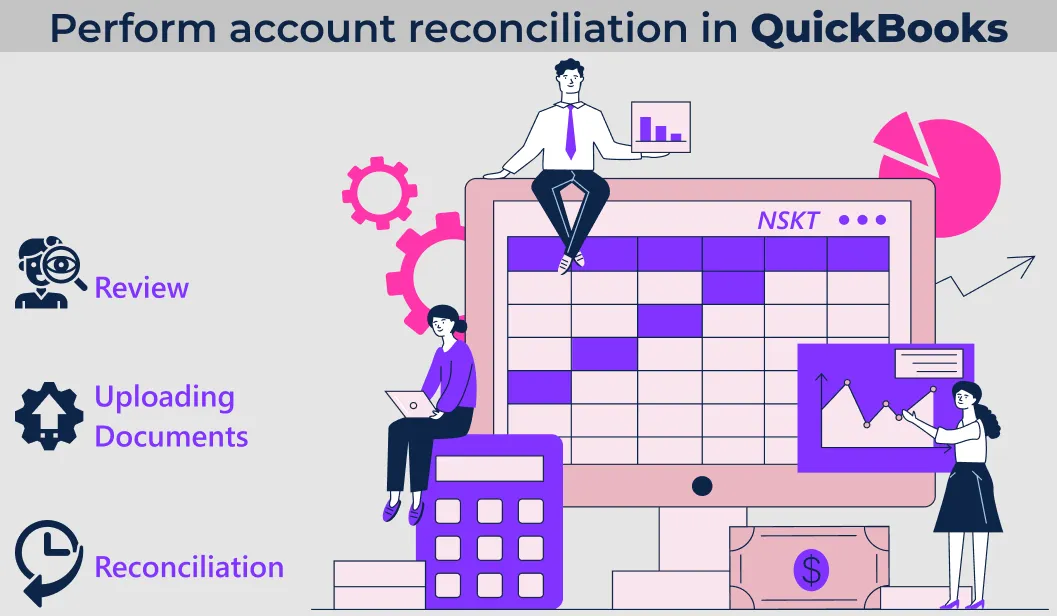Table of Contents
Accounts are the most formidable nemesis of any company if the employees are doing it wrong. At the end of every quarter, companies need to ensure that their ledgers are correct and up to date. Even if there is a slight discrepancy in the ledger like a mismatch between account balance and all accounts payable, the organization has to suffer the brunt of legal action with a threat to their survival in times of pandemics. Thus account maintenance and reconciliation become quintessential for a business, as a slight error may entice penalty or even suspension.
What is account payable reconciliation?
Account payable reconciliation is an important process in accounting solutions that helps ensure the accuracy of a company's account payables. Common reconciling items include unpaid or missing invoices, duplicate payments, and application of credit memos or returns. The account payable team will compare their internal account payable records to supplier statements and resolve any discrepancies. Regular account payable reconciliation is crucial for maintaining clean accounts payable aging reports, catching fraud or errors early, and presenting accurate financial statements. Companies often leverage accounting software and automation to streamline the account payable reconciliation process and ensure proper accounting of liabilities. Overall, diligent account payable reconciliation procedures are a key aspect of strong accounting solutions and financial controls.
Probable causes of mistakes in payable Reconciliation:
- Duplicate invoice processing - Paying the same invoice more than once due to a lack of controls and duplicate entries.
- Invoice and purchase order mismatch - Paying invoices that do not match approved purchase orders and receipts.
- Improper application of discounts and credits - Cash discounts and vendor credits are not properly accounted for.
- Unrecorded liabilities - Expenses and invoices are processed in the wrong period or not at all.
- Inaccurate vendor master data - Payments made to the wrong vendor accounts due to outdated vendor information.
what is account receivable reconciliation?
Account receivable reconciliation is a key process in accounting solutions and services that helps ensure accurate tracking of customer accounts. It involves matching invoices, payments, credit memos, and other transactions against internal customer account records to verify the balances owed to the company. Regular account receivable reconciliation is vital for properly aging receivables, monitoring collections, recognizing revenue, issuing accurate customer statements, and reducing risks of errors. Many companies utilize accounting software and automation to increase efficiency in the accounts receivable reconciliation process.
Probable causes of mistakes in Receivable Reconciliation:
- A sales ledger bypassed entry which was made into the general ledger account.
- Bill was posted in any other account rather than a trade receivable account.
- The difference in date of the receivable report used to obtain the general ledger
The objective of Reconciliation:
The main objective of carrying out reconciliation is to remove financial inconsistencies between the general ledger and the financial statements before any external auditor carries out the financial audit. If any discrepancy is found, the image of the organization in financial matters is tarnished and it may lead to legal issues. However, organizations often find it difficult to carry this out due to inexperience and end up hiring experts for a task that can be completed with a little help and consistency, and without paying more. One such useful resource to reconcile accounts is -QuickBooks.
What is QuickBooks and how will it help?
QuickBooks is an online platform that provides accounting solutions and assists in evaluating the business performance of a business whether medium or small or the condition of the business. Bills or invoice generation, tax preparation, inventory tracking, running payrolls, and assistance in printing financial statements all can be done with QuickBooks and the various products and solutions it offers.
Process of Reconciliation in QuickBooks- A step-by-step guide:
Head start: As soon as you start with QuickBooks, you have the opening balance reflected as you need to connect your bank account with it. Generally, 90 days is the period that is shown, although it can be customized. You can also delete it if you don’t want it. The Undeposited funds account transactions in QuickBooks can also prove to be extremely useful.
Part 1: Updating and Review
Step 1: Uploading of documents: If you have a PDF, you can simply upload it into the “Auto Entry” application. The uploaded PDF will be recreated into an Excel file which can be imported to the QuickBooks application. You also have the feature of manual entry or uploading Excel or CSV files if you have fewer transactions and wish to proceed as per that.
Step 2: At the end of the month an expert goes through the past books, carefully checking every entry and updating them, if necessary. The track record of transactions being organized is available on the dashboard.
Step 3: After the books of the organization are cleaned up, the user can generate a report to see the broader picture in terms of finance.
Part 2: Reconciliation
Step 1: Click on the Accounting Tab present in the navigation bar, and click on the Reconcile sub-tab.
Step 2: Cross-verify and check each account whether it's a bank or a credit card taking one at a time.
Step 3: As per the general ledger or the bank statement match the ending balance and the ending date into the entry table to cross-check. If the end date is the same but the amounts are different, an inconsistency has occurred.
Step 4: When you find the date, you can go into the accounts and check line by line every individual entry until there is no difference between your QuickBooks account and your general ledger or Bank account statements.
Note points: There may be a slight variation as the bank service charges may reflect a difference. Also, uncleared transactions from the bank may create a variation. These can be eliminated if the reconciliation is done periodically and quick corrections are made.
Tutorials, a troubleshooting guide, and a quick support forum are the added advantages of doing reconciliation with QuickBooks. Check it out!
NSKT Global being one of the top certified Quickbooks ProAdvisor helps in the reconciliation of accounts payable, accounts receivable, and bank. We help all kinds of businesses deal with reconciliation as it is inevitable for any business. Quickbooks is very important cloud software to do account reconciliation without any hassle.








